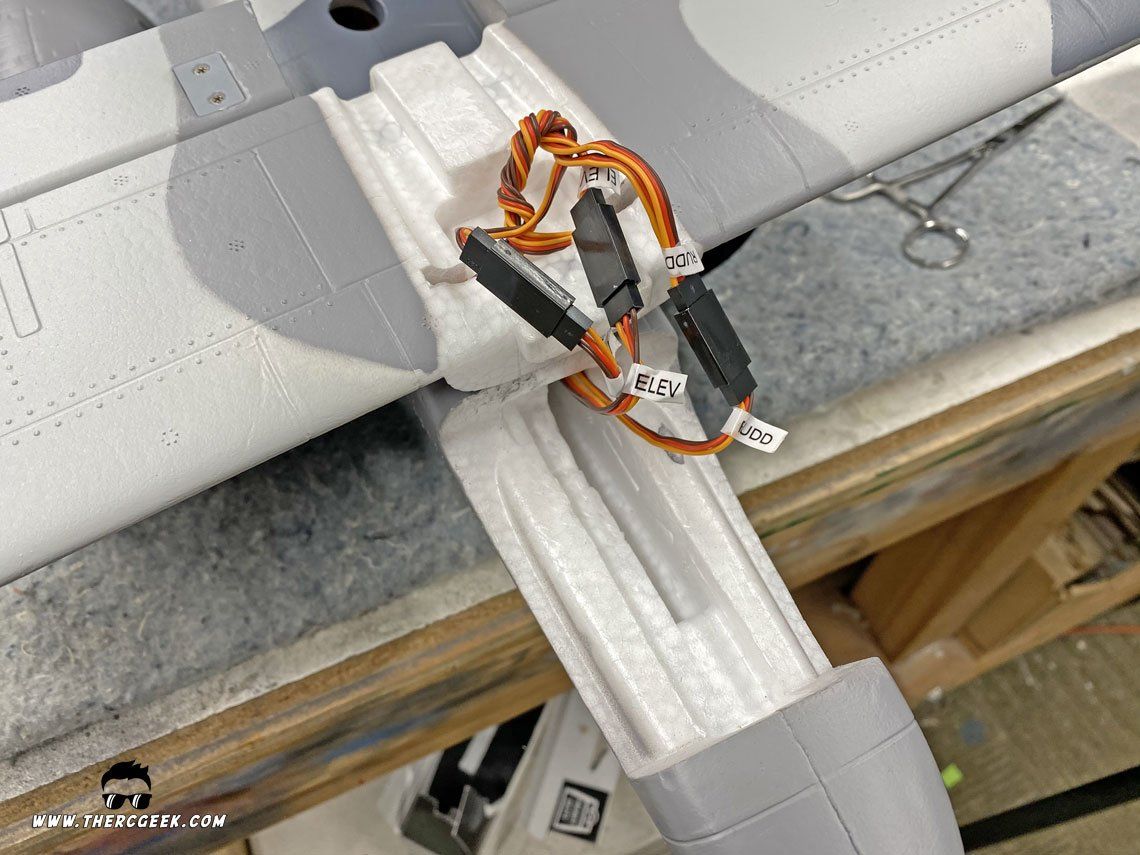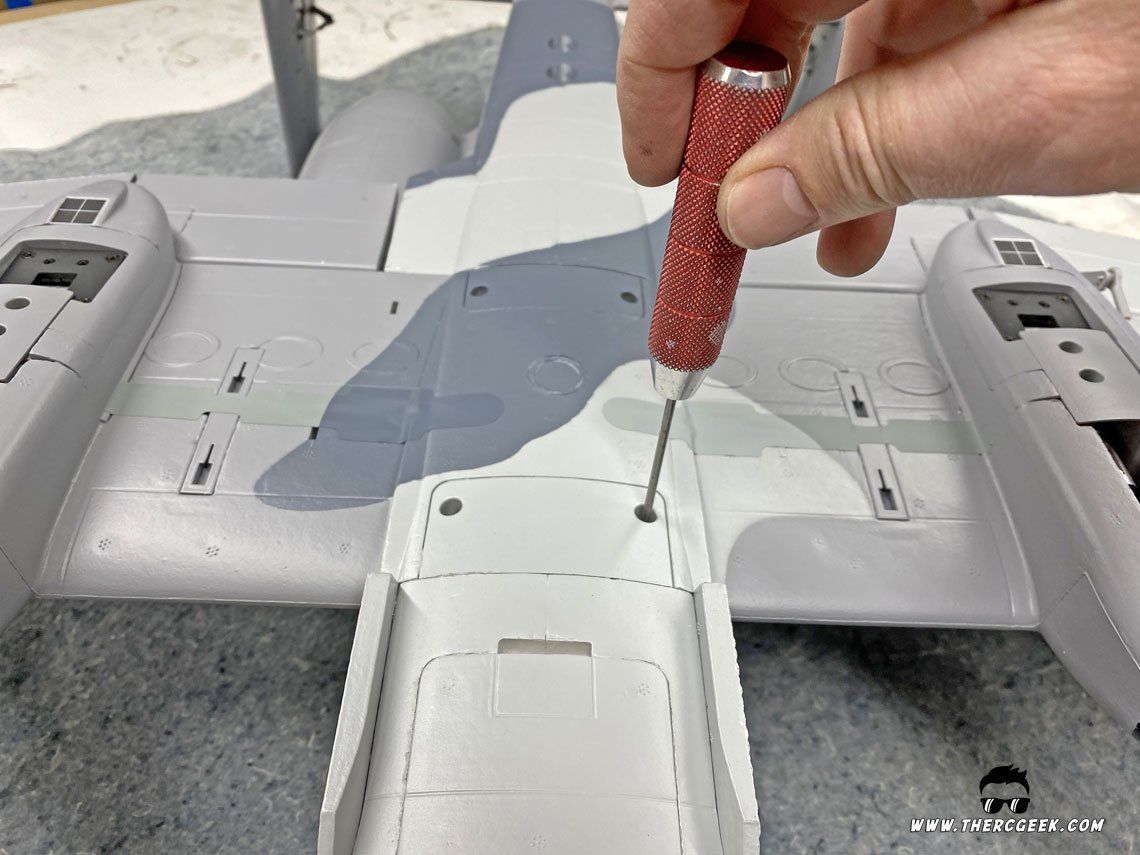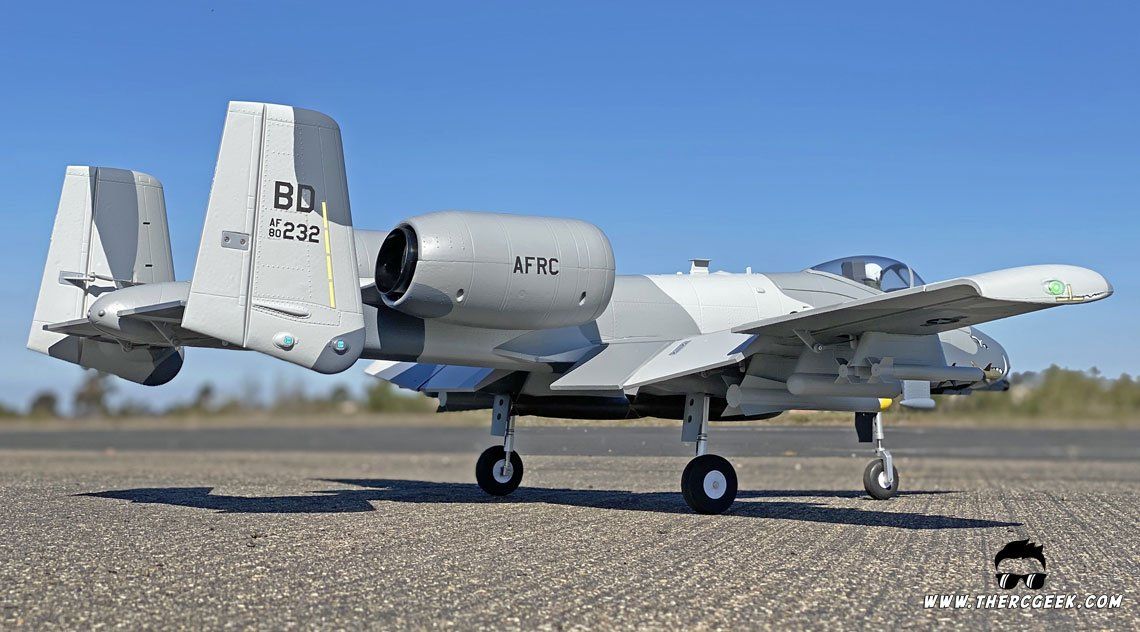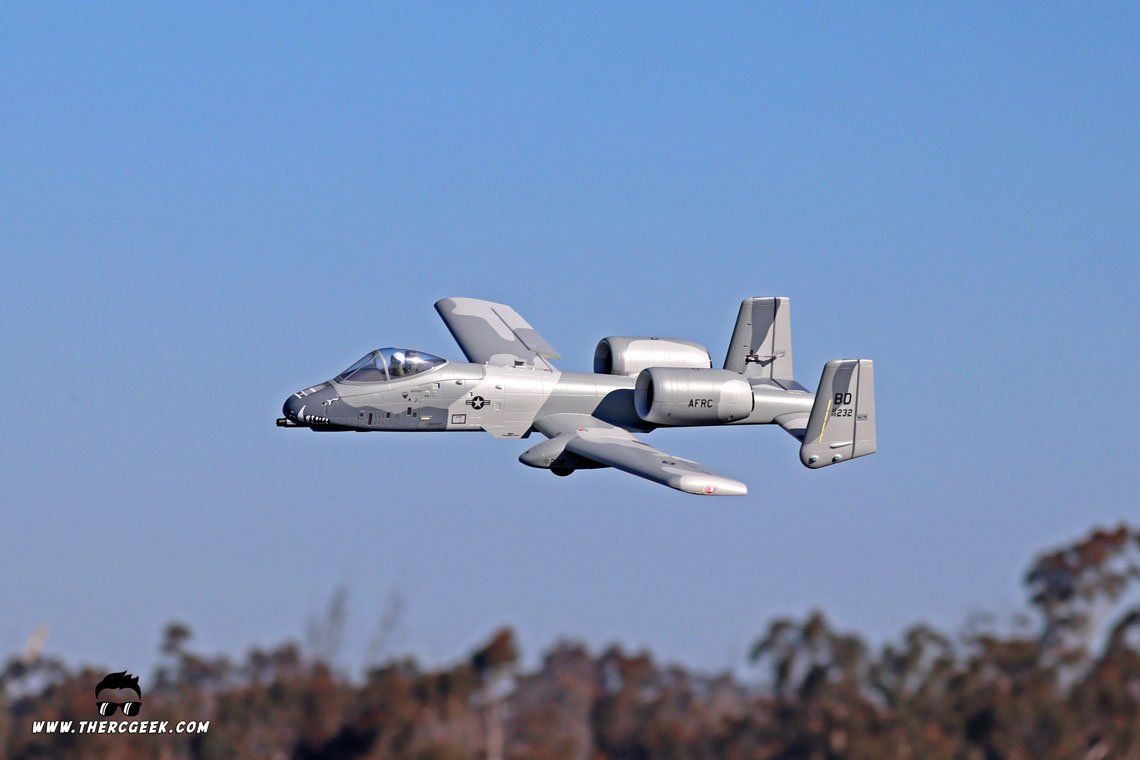The RC Geek Blog
By: Chris Wolfe
Brrrrrrrt! ...oh, excuse me…
The A-10 Thunderbolt II is one of those uniquely identifiable aircraft; it truly is unmistakable. It was built for a purpose and it has served that purpose exceptionally well for decades. Though not as prevalent now as they once were, the airplane is still due to remain in USAF service for at least a few more years it appears. Interestingly, the aircraft retirement has been announced and subsequently postponed multiple times as there just isn't a direct replacement for the airplane that's currently in service. A testament to just how good and effective the airplane is at what it does in the ground attack support role.
So, seeing the new E-flite A-10 Thunderbolt II twin 64mm EDF and the features it includes, I was excited at the opportunity to try out the airplane. The airplane is a great transportable size, but still features retracts and oleos as well as a full complement of external stores which I was really happy to see. After flying the airplane I was blown away as the airplane had incredible performance with a wide speed envelope feeling much bigger in the air than it was. It was extremely fun!

AIRCRAFT ASSEMBLY NOTES
Assembly of the "Hog" is an easy prospect as the airplane is broken down into the major tail and wing sub-assemblies. The process begins with gluing the horizontal tail in place followed by the vertical tails all using medium CA. It's important to test fit these parts first the ensure the servo wires are cleared away so the tails fully seat in place. Also, there are servo wire cover stickers included (if you can't find them, check inside the instruction manual) which can be placed after everything is in place. From there, the single piece wing is bolted on and that is the heart of it. The wing has 3 integrated connectors at the base, so be sure to ensure they line up correctly before fully pressing the wing onto the fuselage.
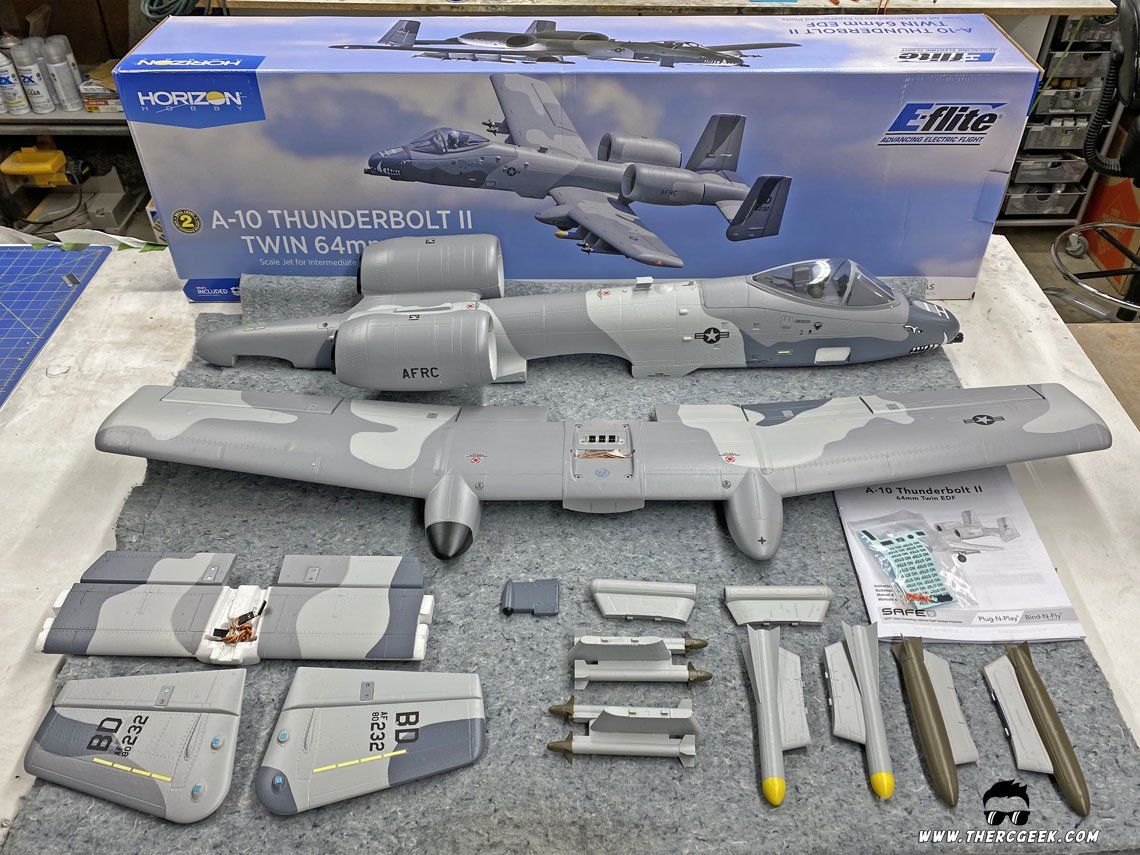
With the airplane assembled and on its gear, you are struck with the unmistakable shape of the A-10 Thunderbolt II. The outline of the model looks quite good and the flipper paint scheme is nicely applied and well done. A full complement of external stores are included as well which most certainly completes the look of the airplane. What really struck me though was the nice and pristine finish as the model is extremely smooth and the airplane features some crisp (and not too large) panel lines and scale raised rivet details. It is definitely one of the smoother foam jets I've come across to date.
AIRCRAFT SETUP & CG
For the aircraft setup, this is the bind and fly version of which means that it includes SAFE select. I have a previous discussion on setting that up here should you want to know more about that. The thing to keep in mind is that there are two bind procedures whether SAFE on or off is desired. In my case here, I wanted SAFE off, so I simply bound the airplane normally for SAFE off.
On the control surface tuning, I prefer to setup individual elevator and aileron triple rates so I have options for the maiden flight. Through flying the airplane I ultimately converged on my mid rates on the ailerons and low rates on the elevator. Also, the airplane wanted to climb slightly with flaps, so a down elevator mix was added with flaps as well. My final control throws are as follows:
- Elevator - 7mm with 3% expo
- Aileron - 12mm with 10% Expo
- Rudder - 14mm with 25% expo to desensitize the steering (the airplane is quite responsive in rudder, so reducing the rate will help if it's too sensitive)
- Flap - 12mm partial flap with 1mm down elevator mix and 26mm full flap with 2mm down elevator mix
With regards to the CG, I'm flying the airplane at around the mid location of the CG noted in the manual. This equates to approximately 62mm as measured from the wing leading edge root aft. I'm using a Spektrum 50c 6s 4000 mah SMART battery pushed as far back in the battery area as possible and this was where the CG fell out and the CG felt great to me there. My timer is set to 4:30 minutes giving plenty of margin to fly the A-10 as hard as I want. That said the airplane can easily fly 5+ minutes as it flies quite efficiently.
FLYING THE E-FLITE A-10 THUNDERBOLT II TWIN 64MM EDF
Truth be told, I really didn't know what to expect with this A-10 but if it flew half as good as it looked, I knew it would be a fun one. Well, I was blown away by just how well this Hog flew. The performance is fantastic as the airplane displays a huge speed envelope being quite quick at full throttle while slowing down beautifully with the flaps down; that's not to mention that the airplane will climb for days having almost unlimited vertical! The A-10 feels much bigger in the air than it is as well which provides a really unique experience in flight. The E-flite 64mm fans paired with the 6s motors and combined with the A-10 airframe have resulted in something that is quite incredible and efficient and so with a 4000 mah battery, 5+ minute flight times are virtually the norm.
The airplane was flown both clean and with the full complement of external stores and there wasn't a huge difference between the two that I found. Maneuverability and response are pretty similar as a whole. There's a small sacrifice in top speed, but the airplane being as quick as it is, it didn't appear to make much difference. I ultimately found that I preferred the stores configuration as I liked the look of it and the airplane did seem to track a little bit truer in my mind.
Seeing the airplane maneuver in the air, it looks right just like its full scale counterpart. The airplane performs rolls cleanly and axially, but truly excels in the vertical performance. Takeoffs are short using only about 60% power and in landing the airplane, I found that keeping a small touch of power through the flare to touch down really helps soften the touch down as well.
FINAL THOUGHTS
The E-flite A-10 Thunderbolt II is a rare beast I tell you what. The looks, the flight performance, the flight times, it really has the whole package. Being an easily transportable size as well, it's an easy one to throw in the car in one piece and hammer out some flights with. She is definitely a keeper! Until next time, I'll see you at the field!
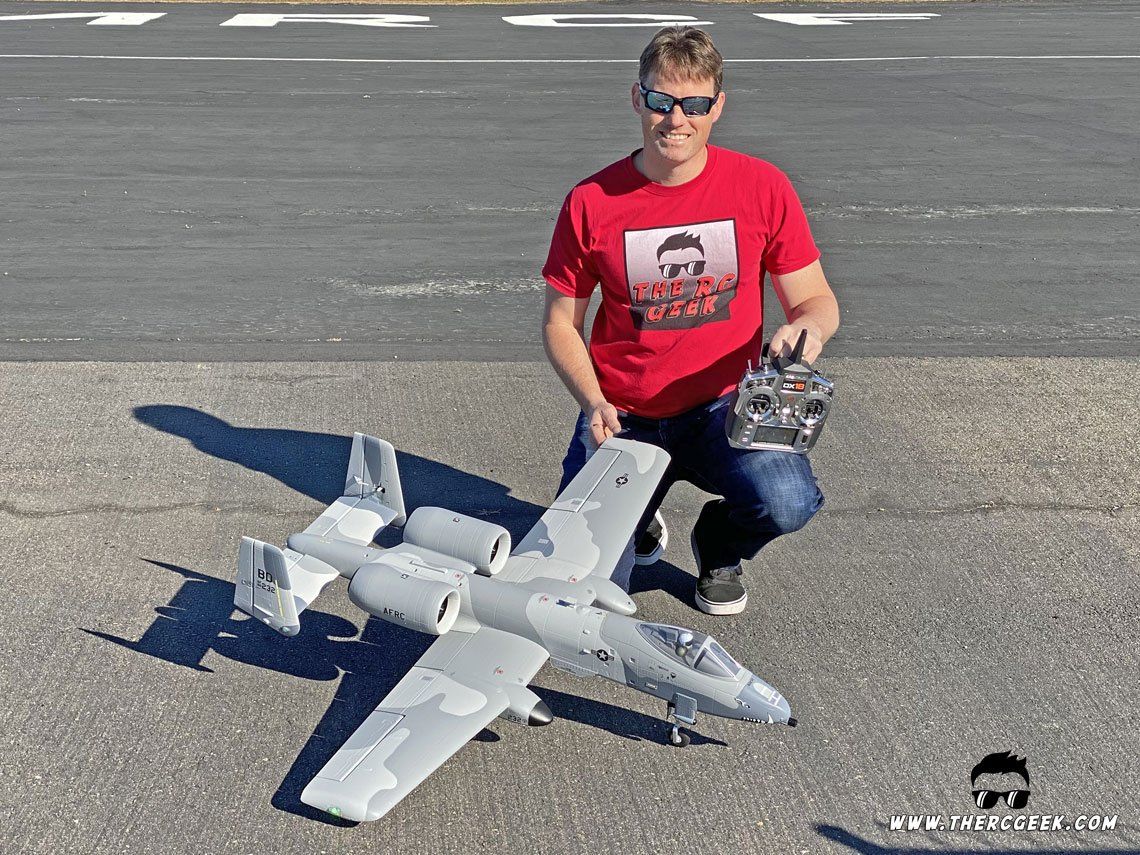
The RC Geek Blog is your place to learn about all aspects of the RC hobby. Learn to build, design, drive or fly that RC project you’ve always wanted to build, but have been intimidated to try. This blog is here to help you on your journey and provide tips and tricks as you go! My hope is to inspire builders both experienced and new! So, welcome, please look around, it’s an exciting beginning! I’m currently documenting my latest competition scale RC jet build, a Mark Frankel F4D Skyray, along with some other fun tips and videos. If you can’t find what you’re looking for on this front page, click on any of the categories to the right and it will show just posts related to those categories. Please feel free to add comments and/or contact me directly if you have questions, I’m here to help! And don’t forget to check out my YouTube Channel, I post new videos every week!
Subscribe To Our Blog Now







